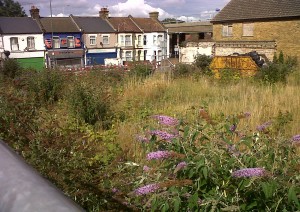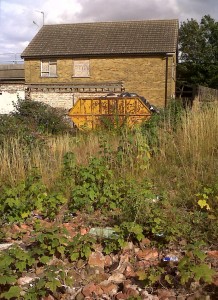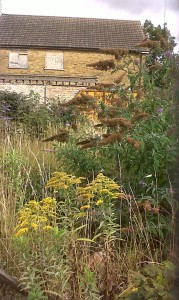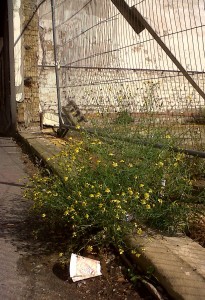Tiny brownfield site is oasis for nature
The site of the long-demolished ‘Harrow’ pub at the junction of Knee Hill and Abbey Road, labelled in the local media as a dangerous and untidy eyesore by some, was on the sunny Sunday afternoon of August 23rd, playing host to some 36 House Sparrows, foraging for seeds on Buddleia and Willowherb, and 3 caterpillars of a Moth that had become extinct in Britain.
House Sparrow numbers dropped by 71 per cent between 1977 and 2008, and are still going down in England, hence the species is Red-listed as of highest conservation concern. The Small Ranunculus Moth vanished from the UK before WWII, but started to make a comeback from continental Europe in the late 1990’s, and benefits from brownfield sites where Prickly Lettuce, one of it’s main foodplants grows, as here.
Other early colonists of bare ground were providing late nectar sources, including Canadian Golden Rod and newer non-native arrival, Narrow-leaved Ragwort.
Too often sites such as this are mindlessly ‘sanitised’ just like everywhere else, when they could provide at least temporary havens for wildlife. Yes the scrappy fencing and other boundary trip hazards could be sorted out, and various idiots could stop throwing litter over the fence, but there’s absolutely no need to throw the baby out with the bathwater…..
Pictures below by Chris Rose:
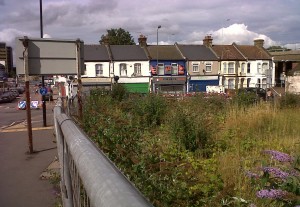
Former ‘Harrow’ pub site in Abbey Wood – a haven for wildlife amongst the grey of paving and concrete.
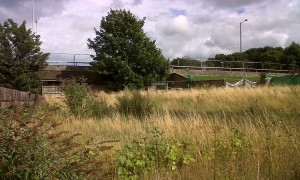
At the rear the developing False Oat Grass-dominated area provides a home for Grasshoppers and Crickets, with Lesnes Abbey Woods beyond.
Chris Rose

